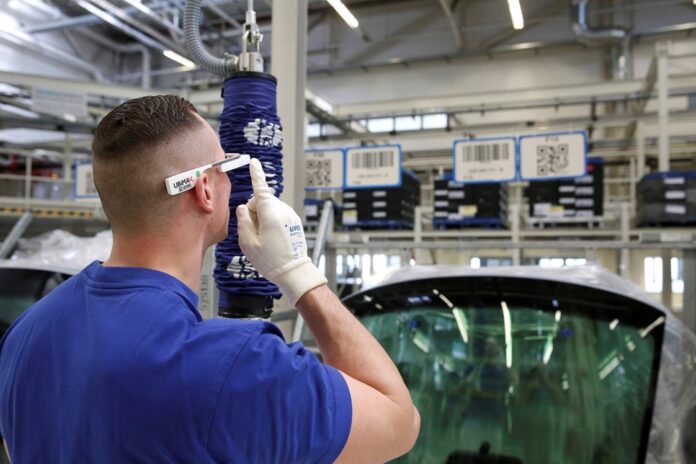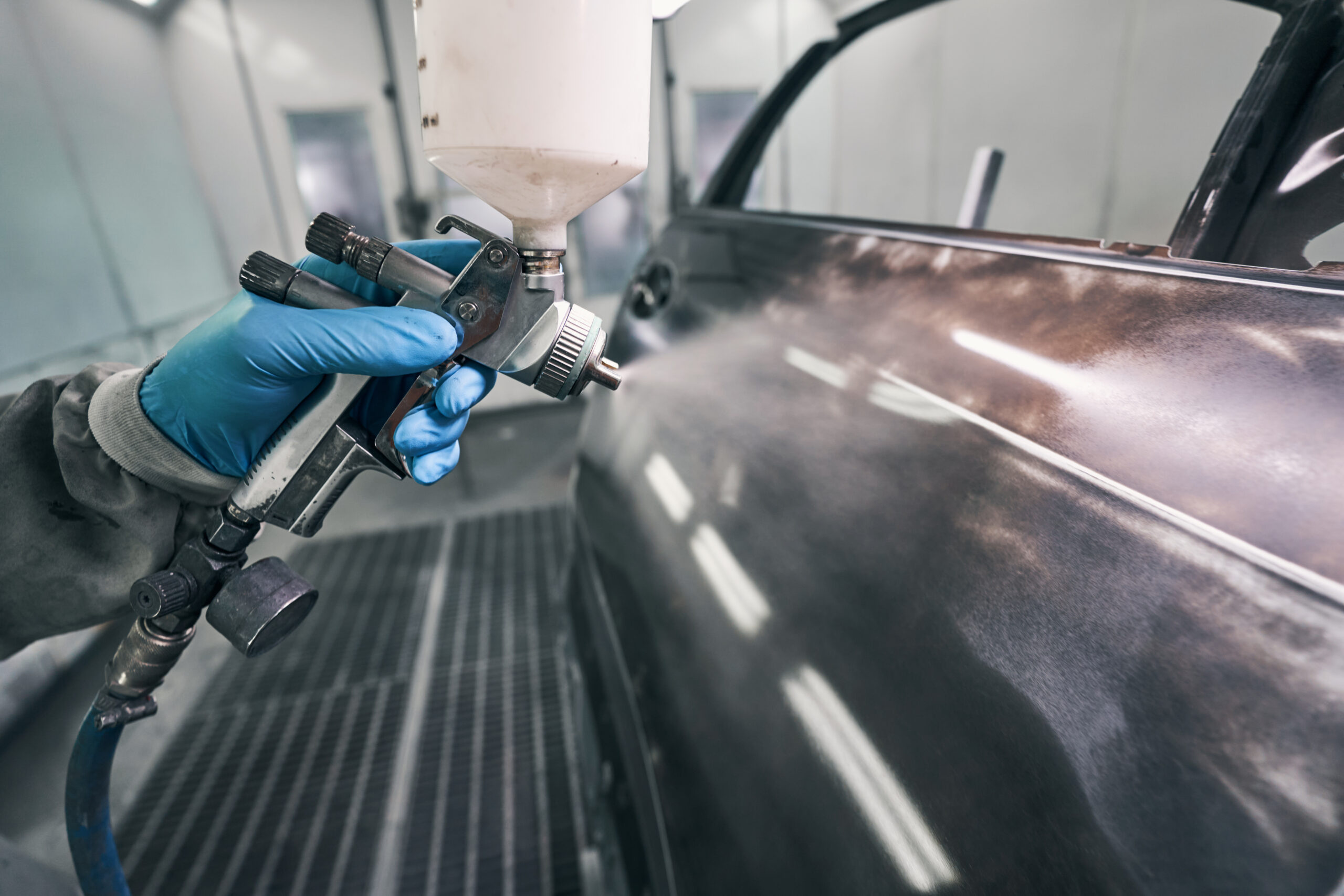Imagine onboarding a new body shop technician in half the time, with 40% less overhead and no risk of damaging a single panel, bumper, or calibration tool. Sounds futuristic? Welcome to the era of Virtual Reality (VR) technician training—a solution for today’s labour shortages and tomorrow’s redesign of automotive repair culture altogether.
Inspired by ForgeFX and Unity’s groundbreaking work in the construction industry, the automotive repair world now stands at the edge of a similar transformation. Just as ForgeFX built a fully immersive, physics-accurate training simulator for Somero’s S-22EZ Laser Screed®, we in the collision repair industry must ask: Why aren’t we doing the same for ADAS recalibration, panel replacement, or EV battery repair?
The Workforce Crisis is Real—and VR Could Solve It
Let’s face it: every bodyshop manager across the UK feels the same crunch. Skilled labour is retiring faster than it’s being replaced. Meanwhile, the complexity of modern vehicles—especially electric vehicles and those packed with ADAS systems—makes on-the-job learning both slow and risky.
- Recruitment Gap: There’s a dire need for new technicians, but the barrier to entry is high. Who wants to risk scratching a £1,200 bonnet on their first week?
- Training Costs: Traditional hands-on training requires space, tools, supervision, and, critically, access to actual vehicles—some extremely expensive or simply unavailable.
- Repair Complexity: With ADAS, high-strength steels, strucutral bonding, and EV insulation protocols, “learning by doing” is becoming increasingly hazardous—for both people and vehicles.
VR flips the script. New recruits can learn muscle memory, safety protocols, and procedural accuracy without touching a real car by simulating repair environments with real-time physics and interactive components.
What Bodyshops Can Learn from Construction
ForgeFX’s collaboration with Unity and Somero Enterprises has set a precedent. In construction, VR training led to:
- 20–40% reduction in training time
- 20–30% reduction in equipment wear-and-tear
- Up to 500 hours saved in simulator development using Unity Build Automation
These benefits directly translate to collision repair:
- Training time slashed: What if new hires could complete structural repair modules in half the time?
- No consumable waste: You can’t waste primer or filler in the metaverse.
- Repeatable learning: Technicians can rehearse complex processes like panel bonding or glass removal until they get it right—risk-free.
Let’s not ignore the safety boost: VR scenarios can simulate dangerous edge cases—like high-voltage EV battery issues or incorrect lift placement—without real-world consequences.
VR as a Talent Magnet
Let’s be blunt. A dusty workshop doesn’t sell itself to the next generation.
VR, on the other hand, does.
- Appeals to digital natives: Young learners expect technology-first education. VR speaks their language.
- Upskilling within the trade: Do you already have a prepper looking to become a panel tech? VR training offers a scalable bridge program.
- Inclusive, low-pressure learning: Technicians can fail safely, learn at their own pace, and develop confidence before entering live bays.
Somero’s partnership with vocational institutions through its “Concrete Institute” showcases how this model can attract fresh talent into legacy industries. To future-proof our trade, why not create a UK Body Repair Institute with a VR-first curriculum?
Beyond the Booth: How VR Could Reshape Automotive Design
Here’s the bigger picture: what if VR repair simulation feeds back into the vehicle design cycle?
Currently, repairability is often an afterthought in vehicle design. But a VR training feedback loop could influence OEMs and insurers to:
- Design for disassembly: If a task is always tricky in simulation, it’s probably more complex in reality.
- Identify unnecessary complexity: Are there too many hidden fasteners? Too much dependency on a single part? The data will show it.
- Create “repair-friendly” trim levels: Sim data could help OEMs and insurers define model variants that are easier (and cheaper) to repair.
It’s a bold idea: integrate repairability metrics directly into CAD environments as early as vehicle prototyping. VR isn’t just a training tool—it’s a diagnostic lens for vehicle design.
The UK-Specific Case: Time to Lead, Not Follow
The UK repair industry is uniquely poised to benefit from virtual simulation:
- Compliance Training: VR can fast-track repairer personal professional development for BSi 10125 and so, entry to insurance approved networks.
- Parts Scarcity: When waiting on parts, shops could reallocate time to VR upskilling—turning downtime into productivity.
- Regional Rollout Potential: Rural shops that struggle to recruit or travel to training centres could access VR-based programs remotely.
But What About the Cost?
Let’s not pretend this tech is free. Developing high-fidelity simulations takes money and expertise. However, Unity’s Build Automation and XR Interaction Toolkit—used by ForgeFX—have shown that development time can be significantly cut with innovative tooling.
And with Meta’s dominance in the VR hardware space (owning 90% of the market), headset costs are falling fast. A shop could deploy multiple VR rigs for a fraction of the price of one mid-size repair bay.
The real question isn’t “Can we afford this?”—it’s “Can we afford not to?”
Looking Ahead: Who Will Lead the Charge?
Here’s a vision: a national UK-wide VR Repair Curriculum developed in partnership with multiple training providers such as Thatcham research, the IMI, major insurers, and OEMs.
- Hosted on a secure VR platform.
- Modular, certifiable, and continuously updated.
- Free to schools and vocational programs.
- Subsidised for repairers through trade bodies or OEM networks.
If we don’t do it, someone else will—likely from overseas.
Conclusion: A Safer, Smarter, More Scalable Future
The car repair industry is on the brink of a generational shift. The problems we face—labour shortages, complexity creep, safety concerns—are real but also solvable.
VR is not a gimmick. It’s the lever that could shift the entire industry.
So, let’s stop thinking of simulators as novelties and start seeing them for what they are: the new workshop, the new classroom, and the new R&D lab—all rolled into one.
Are you ready to put on the headset?




